Steel is an important metal used across the globe. Steel is mainly consumed in larger quantities by end-users such as the infrastructure and construction sectors. The production process of steel is energy-intensive.

Technological progressions and extensive R&D such as use of generated energy from the system itself have decreased the consumption of energy in the production process. This has assisted in the reduction of greenhouse gas emissions once the latest processes are successful. This will also resist climate changes due to pollution occurring across the globe, which has become a serious environmental issue in recent years.
Thus, the consumption of steel as a sustainable material is the latest trend that is projected to assist the growth of the market during the forecast period.
In 2017, the risk of global recession receding and economic performance improving across most regions along with several geopolitical changes still created some concern. US policy uncertainties, Brexit, the rising populist wave in the current European elections and the potential retreat from globalisation and free trade under the pressure of rising nationalism adds a new dimension of uncertainty in investment environments. To balance this, risks from ongoing conflicts in the Middle East and in Eastern Ukraine appeared to be reducing.
There is some good news for steel producers around the world. After years of wait characterised by slowing demand, excess capacity and large inventory, facing headwinds that slowed consumption in recent years, world steel demand growth is beginning to face a cyclical upturn. Consumption demand is expected to pick up on the back of the momentum in global economic growth.
Based on the demand conditions so far, this year, the World Steel Association, in its short-range outlook, has forecasted that global steel demand will reach 1,622 million tons (mt) in 2017 and will improve to 1,648 mt in 2018.
この記事は Steel Insights の January 2018 版に掲載されています。
7 日間の Magzter GOLD 無料トライアルを開始して、何千もの厳選されたプレミアム ストーリー、9,000 以上の雑誌や新聞にアクセスしてください。
すでに購読者です ? サインイン
この記事は Steel Insights の January 2018 版に掲載されています。
7 日間の Magzter GOLD 無料トライアルを開始して、何千もの厳選されたプレミアム ストーリー、9,000 以上の雑誌や新聞にアクセスしてください。
すでに購読者です? サインイン

Steel's Net Zero mission
The country’s commitment to achieving Net Zero within a targeted timeframe will now propel its steel sector towards a sustainable future in line with global trends.
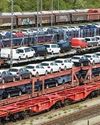
Fuel Price Hike, Supply Chain Disruption Hurt Festive Sales
Supply chain disruptions and fuel price hikes have hurt festive sales in a big way as most auto majors posted decline in sales in October.

Seaborne coking coal offers remain range-bound
Seaborne coking coal offers moved in a narrow range in October amid global supply tightness and healthy spot demand.
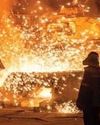
Global crude steel output down 8% in September
China manufactured 74 mt in September, fall of 21% y-o-y while India’s production went up by 7% to 10 mt.
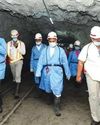
MOIL embarks on expansion projects
“Even though our country is blessed with manganese ore reserves, we import 50% of the domestic requirement. We have to lower our import dependence and save precious foreign exchange.” Ram Chandra Prasad Singh, Steel Minister

Iron ore handled by major ports down 17% in H1
The 12 major Indian ports handled 27 mt of iron-ore during H1 of 2021, down by 17% from 33 mt recorded for the corresponding period of previous year.
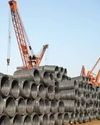
Shrinking China output to boost India exports
“In the third quarter of 2021, the company actively responded to the pressure from external policies, such as production curtailment and dual control system on energy consumption and intensity, as well as coal resource shortage and surging prices.” Baoshan Iron and Steel Co Ltd

Indian Railways' iron-ore handling up 25% in H1
Indian Railways in April-September of 2021 (H1) transported 84 mt of iron ore, up by 25% over 67 mt during April-September 2020.
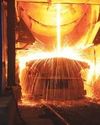
September crude steel production up 7.2% y-o-y
India’s crude steel production in September 2021 grew 7.2 percent to 9.547 million tons (mt) over September 2020 but was down by 3.2 percent from August 2021 output, provisional steel ministry data showed.

“Five enablers: way forward to sustainable cleaner steel”
Right and scalable technology, appropriate policy guidance by government, access to finance to fund transition, willingness of customers to pay for cleaner products and infrastructure for use of new technologies are the need of the hour for the sustainable and cleaner steel industry, according to Madhulika Sharma, Chief Corporate Sustainability, Tata Steel.